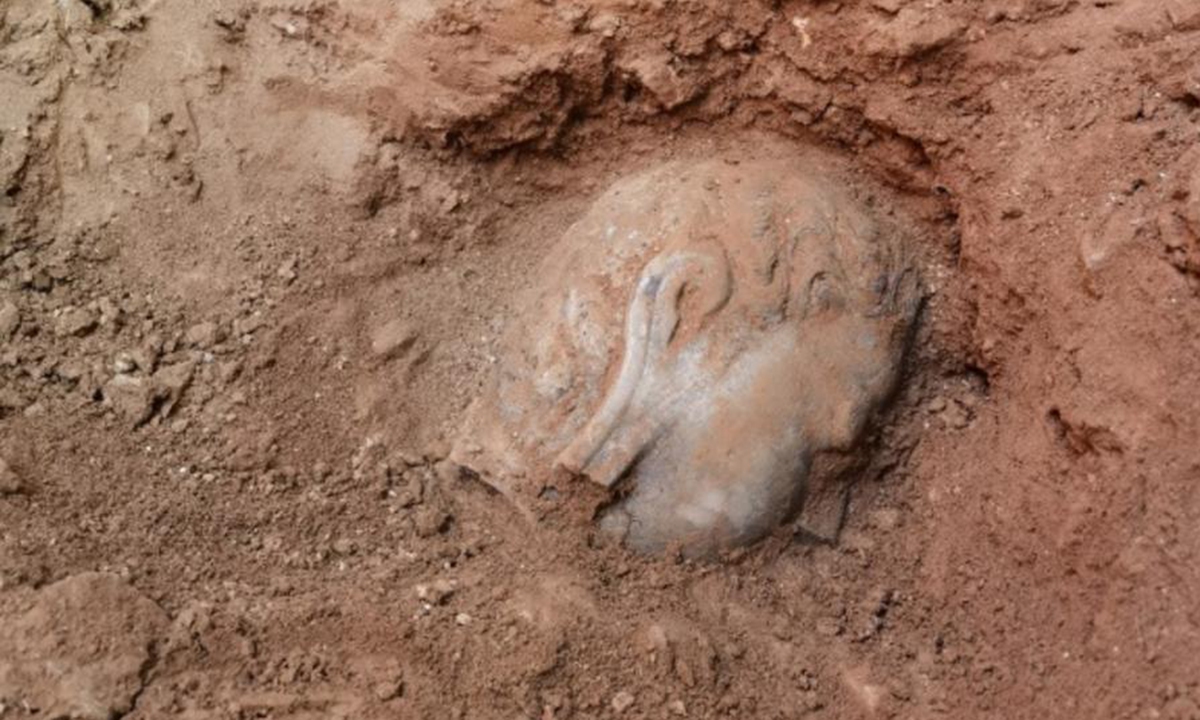
The Buddha head found inside the west wall of the south cave of Leigutai caves in Longmen Grottoes in Luoyang, Central China's Henan Province. Photo: Longmen Grottoes research institute/Handout via Xinhua
More than 80 stone carvings, including a Buddha head, and building components have been discovered inside a cave of the Longmen Grottoes, a 1,500-year-old UNESCO World Heritage site, in Luoyang, Central China's Henan Province.
The relics were found inside the west wall of the south cave of Leigutai during maintenance work, according to the Longmen Grottoes research institute.
This is the first time that archaeologists have found stone carvings inside the cave's wall of Longmen Grottoes, according to Lu Wei, director of the history and humanities research center of the institute.
"The unearthed relics mainly consist of stone carvings, including a Buddha head, the remains of a Bodhisattva statue, fragments of rosettes and patterns, and statue bases," said Lu.
"Upon initial inspection, most of the statue fragments can be pieced together for restoration. Currently, indoor sorting of the unearthed artifacts is underway, with plans for cleaning, assembling, and splicing," added Lu.
Notably, a relatively well-preserved Buddha head was found, which is 38 centimeters in height, 22 centimeters in width, and 19 centimeters in thickness, according to Lu.
Based on the analysis of the archaeological excavation results of the Leigutai caves and historical documents, the relics are thought to have been stacked up and embedded in the walls in the mid- to late Ming Dynasty (1368-1644) and used as materials to repair and reinforce the cave walls.
Located at the south end of the grottoes' Dongshan area, Leigutai boasts three caves respectively located in the north, middle and south, and several small niches on the cliff outside the grottoes.
'The findings are of great value for the study of the stone carving art in the Tang Dynasty (618-907), the history and culture of Leigutai caves, and the maintenance and reinforcement works done in ancient times," said Lu.
Boasting a history of more than 1,500 years, the Longmen Grottoes were listed as a UNESCO World Heritage site in 1999, which was described by UNESCO as "representing the high point of Chinese stone carving."
The historical site includes more than 2,300 grottoes with a total of 110,000 Buddhist figures and images, more than 80 dagobas and 2,800 inscribed tablets created between the Northern Wei Dynasty (386-557) and Song Dynasty (960-1279).
Global Times




